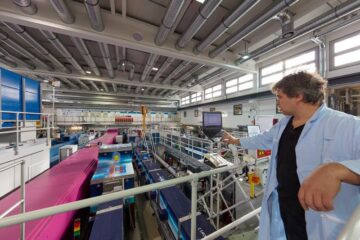Latest Findings On PCBs to Be Subject of June Workshop at Illinois

Some 200 scientists from around the world will gather June 13-15 at the University of Illinois at Urbana-Champaign to discuss their latest findings on the health effects of exposure to PCBs (polychlorinated biphenyls) – long-lasting chemicals manufactured and widely used before being banned or restricted since the late 1970s.
The talks at the International PCB Workshop will be reviews that highlight new findings and suggest new ways to look at existing information, said co-organizer Larry G. Hansen, a professor of veterinary biosciences in the College of Veterinary Medicine. The National Institute of Environmental Health Sciences and U.S. Environmental Protection Agency are sponsoring the event as part of their Superfund Basic Research Program.
The afternoon session June 13 will feature nine talks focusing on the human health consequences of similar environmental exposures to PCB-contaminated soils near former production plants in Anniston, Ala., and in eastern Slovakia.
PCBs were used extensively, beginning in the 1930s, in many industrial compounds that found their way into caulking materials, inks, paints, coolants, electrical transformers and capacitors. PCBs today are found in soils near former production plants, in the food chain and in discarded electrical equipment at disposal sites.
The PCB Workshop will be held at the Hawthorn Suites Conference Center, 101 Trade Centre Drive, Champaign.
The workshop is designed to allow researchers from various scientific fields to integrate their knowledge and experience. The co-organizers are Hansen, Larry W. Robertson of the University of Iowa and Bernhard Hennig of the University of Kentucky.
Media Contact
Alle Nachrichten aus der Kategorie: Veranstaltungsnachrichten
Neueste Beiträge

Bakterien für klimaneutrale Chemikalien der Zukunft
Forschende an der ETH Zürich haben Bakterien im Labor so herangezüchtet, dass sie Methanol effizient verwerten können. Jetzt lässt sich der Stoffwechsel dieser Bakterien anzapfen, um wertvolle Produkte herzustellen, die…

Batterien: Heute die Materialien von morgen modellieren
Welche Faktoren bestimmen, wie schnell sich eine Batterie laden lässt? Dieser und weiteren Fragen gehen Forschende am Karlsruher Institut für Technologie (KIT) mit computergestützten Simulationen nach. Mikrostrukturmodelle tragen dazu bei,…

Porosität von Sedimentgestein mit Neutronen untersucht
Forschung am FRM II zu geologischen Lagerstätten. Dauerhafte unterirdische Lagerung von CO2 Poren so klein wie Bakterien Porenmessung mit Neutronen auf den Nanometer genau Ob Sedimentgesteine fossile Kohlenwasserstoffe speichern können…





















